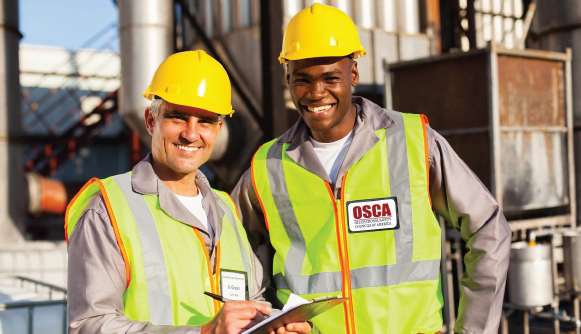
General Training for Construction Workers Includes:
OSHA offers 10- and 30-hour courses with the 10-hour courses intended as preparation for entry level workers in the field. Employees who will have any degree of safety responsibility should complete the appropriate 30-hour course. The 10-hour course covers basic awareness training to help construction workers recognize and avoid hazards in the workplace. Workers also learn about their rights and the responsibilities of their employer, along with the process for filing a complaint. The OSHA Outreach training programs are not required by OSHA but are often required by employers or unions.
Hazards Exposure to Construction Workers in the Field
Thousands of construction workers are exposed daily to the hazards of the workplace. They are at risk of falls from significant heights, from injuries when trenches or scaffolds collapse, electric shock or arc flash or blast, injuries that occur from performing repetitive motions and those that occur when they fail to use the appropriate personal protective equipment.
Accidents occur on the construction site when workers fail to check the sturdiness and stability of the equipment or objects they step onto. Safety training prepares construction workers to evaluate each situation to determine if they will have the solid footing they need to prevent falls. Scaffolds must be left in place unless supervised by a competent person and are required to have guardrails, toeboards and midrails and any warn parts or accessories must be replaced or repaired immediately.
The Importance of Fall Training
Although every area of training that construction workers undergo are important for safety, avoiding falls is a special concern due to their being the leading cause of fatalities in construction year after year. Workers will learn the use of aerial lifts and elevated platforms in some circumstances to ensure they are on safer elevated surfaces. They will also cover the requirements for scaffolding listed above to prevent falls that could result in injury or death. Body harnesses are another type of safety equipment that could greatly reduce the consistently high number of falls among construction workers.
Although ladders and stairways do not have the potential for falling from high distances that occur with scaffolds, they are still responsible for a number of serious falls that cause injury and missed work. Safety training covers the guidelines that should be followed when choosing a ladder for a specific job and the problems that can lead to falls.
Construction work is filled with hazardous situations and dangerous equipment. The many accidents that occur in the field could be potentially avoided if every new construction worker received the appropriate training.
This article was provided by OSCA, a provider of workplace safety training, employee data management and drug testing services.